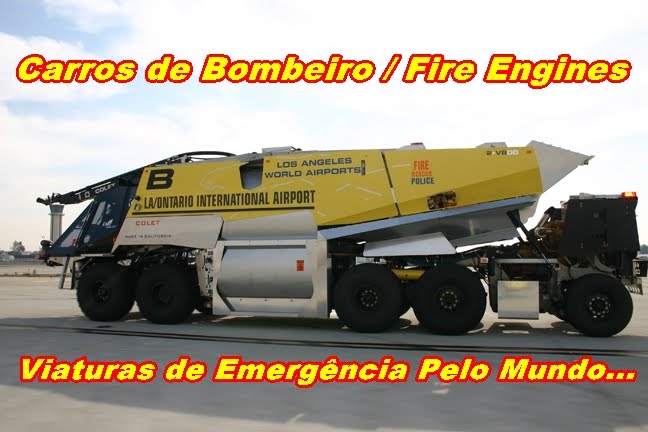International Airport Fire Engines
International civil aviation regulator ICAO has available specific rules such as Annex 14, Chapter 9 for implementing rescue and firefighting operations at airports, such as response time not exceeding three minutes or having minimum capacity and discharge rates based on airport size. You can download a copy of ICAO Annex 14 here.
[Redacted: While as far as we know there are no international standards for firefighting operations at airports, it is interesting to note how similar they all are - after all, all international airlines landing at United States airports have to be approvedas having safe aircraft, and there are several things to note about them: they are big, they carry a lot of people, and ignition is always a likely possibility.]
The China Airlines Flight 120 incident on August 20, 2007 required rapid intervention and rescue and ultimately saved the lives of all 165 passengers after it caught fire. Image courtesy of runner301.
Here at Firefighter-EMT.com we’ve highlighted some of our finds worldwide. Nearly all airport fire apparatus carry some form of foam - usually, Class B foam - which suppress the volatility of flammable liquids and vapors. We’ve also noticed that the Austrian company Rosenbauer is the leading manufacturer and provider of choice at many international airports.
A Rosenbauer ‘Simba’ tender operating out of Frankfurt am Main Airport, for which it was specially designed. Courtesy of Peter von Marion.
A Scania P380 6×6 short cab vehicle operating out of Oskarshamns, Sweden. Photo courtesy of Scania group.
Another Rosenbauer unit at Delhi International Airport. Photo courtesy of vm2827.
A German Lentner “Avenger” airport crash tender built on a Dutch space-frame Terberg 6×6 chassis at the Bydgoszcz Szwederowo Airport, Poland. It can carry up to 12,000 liters of water as well as 1,500 liters of foam. Image courtesy of corarz.
30-ton Carmichael International Cobra 2 fire engines at Manchester Airport, UK. Image courtesy of DM Aviation Images.
Another Carmichael unit with a different paint job at the East Midlands Airport in the UK. Photo courtesy of John Hartley.
Fire training at Schipol Airport, Amsterdam. Image courtesy of virtualpilot88.
Oshkosh Striker 1500 ARFF Truck 815 of Portland Airport Fire Rescue in the United States. Oshkosh is a familiar manufacturer in the United States for heavy duty vehicles as airport emergency trucks. Courtesy of F18E777.
An airport fire service lifting unit from Italy, on tour in Hanover, Germany. Image courtesy of tragesessel4350.
A Rosenbauer ‘Tiger’ unit at Bengaluru International Airport, Bangalore, India. Image courtesy of photoyogi.
Notice the similarity between the unit in Bangalore with this one in service at Dubai International Airport, a Rosenbauer ‘Panther’ 8×8 unit. It weighs nearly 40 tons, and has a a capacity of 3,830 gallons (14,500 liters) of fire extinguishing agents and a maximum speed of 87 mph (140 km/h). It won gold at the International Design Excellence Award in 2008.
Photo courtesy of tragesessel4350.
What I believe to be a Unipower chassis - fabricated by UMW Wagon Engineering, at a Malaysian airport. Image courtesy of Nick.
Iveco Magirus’s Super Dragon X8. Iveco manufactures a lot of mainland Europe’s fire engines. Image courtesy of Jacopo Prisco.
A Rosenbauer unit with telesquirt at Macau International Airport. Courtesy ofMelinda.
A pair of E-One Titan HPR spotted at Groningen Airport Eelde in the Netherlands. It has a pump capacity of 7800 lpm and can carry 11750 litres of water. Photo courtesy of Netherlands Air Force 001.
+de+KR40Ontario7.jpg)
Nenhum comentário:
Postar um comentário
Coment here... Comente aqui...